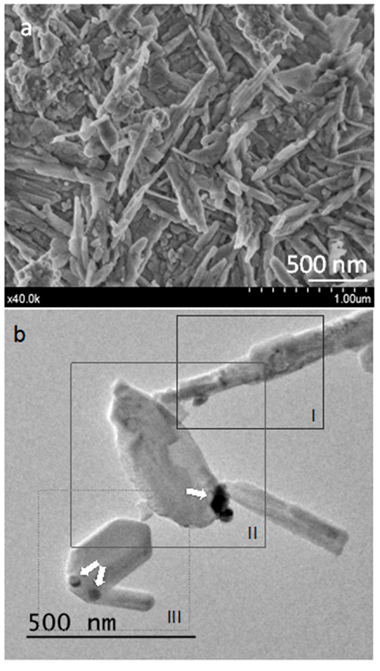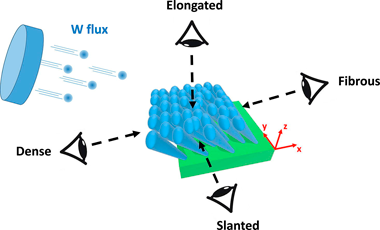Artículos SCI
2020
2020
Materiales de Diseño para la Energía y Medioambiente
Vegetable hierarchical structures as template for bone regeneration: New bio‐ceramization process for the development of a bone scaffold applied to an experimental sheep model
Filardo, G; Roffi, A; Fey, T; Fini, M; Giavaresi, G; Marcacci, M; Martinez-Fernandez, J; Martini, L; Ramirez-Rico, J; Salamanna, F; Sandri, M; Sprio, S; Tampieri, A; Kon, EJournal of Biomedical Materials Research Part B-Applied Materials, 108 (2020) 600-611
Show abstract ▽
Long bone defects still represent a major clinical challenge in orthopedics, with the inherent loss of function considerably impairing the quality of life of the affected patients. Thus, the purpose of this study was to assess the safety and potential of bone regeneration offered by a load‐bearing scaffold characterized by unique hierarchical architecture and high strength, with active surface facilitating new bone penetration and osseointegration in critical size bone defects. The results of this study showed the potential of bio‐ceramization processes applied to vegetable hierarchical structures for the production of new wood‐derived bone scaffolds, further improved by surface functionalization, with good biological and mechanical properties leading to successful treatment of critical size bone defects in the sheep model. Future studies are needed to evaluate if these scaffolds prototypes, as either biomaterial alone or in combination with augmentation strategies, may represent an optimal solution to enhance bone regeneration in humans.
Abril, 2020 | DOI: 10.1002/jbm.b.34414
Materiales para Bioingeniería y Regeneración Tisular
A Microstructure Insight of MTA Repair HP of Rapid Setting Capacity and Bioactive Response
Jimenez-Sanchez, MC; Segura-Egea, JJ; Diaz-Cuenca, AMaterials, 13 (2020) 1641
Show abstract ▽

Mineral trioxide aggregate (MTA) is considered a bioactive endodontic material, which promotes natural mineralization at the material-tooth tissue interface. MTA Repair HP stands out because of the short setting time and the quick and effective bioactive response in vitro. The bioactivity, depens on material composition and microstructure. This work is devoted to analyze MTA Repair HP microstructural features, of both the powder precursor and set material, to get insights into the material physicochemical parameters-functionality performance relationships. Transmission electron microscopy (TEM), and field emission gun scanning electron microscopy (FEG-SEM) coupled with energy-dispersive X-ray (EDX) analyses were performed. X-ray diffraction (XRD) measurements were carried out at different times to investigate setting process. Bioactivity evaluation in vitro was carried out by soaking the processed cement disk in simulated body fluid (SBF). The presented results point out those MTA Repair HP precursor material characteristics of tricalcium silicate particles of nanometric size and high aspect ratio, which provide an elevated surface area and maximized components dispersion of calcium silicate and very reactive calcium aluminate. The MTA Repair HP precursor powder nanostructure and formulation, allows a hydration process comprising silicate hydrate structures, which are very effective to achieve both fast setting and efficient bioactive response.
Abril, 2020 | DOI: 10.3390/ma13071641
Reactividad de Sólidos
Development of a high-pressure thermobalance working under constant rate thermal analysis
Perejon, A; Sanchez-Jimenez, PE; Criado, JM; Perez-Maqueda, LAJournal of Thermal Analysis ande Calorimetry, 142 (2020) 1329-1334
Show abstract ▽
A thermogravimetric instrument that works at high pressure of different gases has been designed and assembled. The instrument has been devised to work in a temperature range from room temperature to 1000 degrees C in various controlled pressures of selected gas up to 15 bar, and under conventional rising temperature and constant rate thermal analysis (CRTA) modes. CRTA method allows an intelligent control of the reaction temperature using a feedback system that monitors the mass gain or mass loss of the sample in such a way that the reaction rate is maintained constant all over the process at a preselected value. CRTA method provides a significant advantage for studying processes under high pressure as it reduces heat and mass transfer phenomena that are very relevant under these high-pressure experimental conditions. The thermal oxidation of Ni at 8 bar of pure oxygen has been used for testing the performance of the instrument under both linear heating rate and CRTA conditions.
Abril, 2020 | DOI: 10.1007/s10973-020-09644-5
Nanotecnología en Superficies y Plasma
In Vitro and In Vivo Study of Titanium Grade IV and Titanium Grade V Implants with Different Surface Treatments
Diaz-Sanchez, RM; de-Paz-Carrion, A; Serrera-Figallo, MA; Torres-Lagares, D; Barranco, A; Leon-Ramos, JR; Gutierrez-Perez, JLMetals, 10 (2020) 449
Show abstract ▽
The aim of our study is to evaluate different implant surface treatments using TiIV and TiV in in vitro and in vivo studies. An in vitro study was established comprising four study groups with treated and untreated TiIV titanium discs (TiIVT and TiIVNT) and treated and untreated TiV titanium discs (TiVT and TiVNT). The surface treatment consisted in a grit blasting treatment with alumina and double acid passivation to modify surface roughness. The surface chemical composition and the surface microstructure of the samples were analyzed. The titanium discs were subjected to cell cultures to determine cell adhesion and proliferation of osteoblasts on them. The in vivo study was carried out on the tibia of three New Zealand rabbits in which 18 implants divided into three experimental groups were placed (TiIVT, TiIVNT, and TiVT). Micro-computed tomography (micro-CT) was performed to determine bone density around the implants. The results showed that cell culture had minor adhesion and cell proliferation in TiIVT and TiVT within the first 6 and 24 h. However, no differences were found after 48 h. No statistically significant differences were found in the in vivo micro-CT and histological study; however, there was a positive trend in bone formation in the groups with a treated surface. Conclusions: All groups showed a similar response to in vitro cell proliferation cultures after 48 h. No statistically significant differences were found in the in vivo micro-CT and histological study
Abril, 2020 | DOI: 10.3390/met10040449
Nanotecnología en Superficies y Plasma
A 4-view imaging to reveal microstructural differences in obliquely sputter-deposited tungsten films
El Beainou, R; Garcia-Valenzuela, A; Raschetti, M; Cote, JM; Alvarez, R; Palmero, A; Potin, V; Martin, NMaterials Letters, 264 (2020) 127381
Show abstract ▽

We report on the morphological disparity of the columnar growth in W thin films sputter-deposited by oblique angle deposition. Oriented tungsten thin films (400 +/- 50 nm thick) are prepared using a tilt angle alpha of 80 degrees and a sputtering pressure of 0.25 Pa. Inclined columns (beta = 38 +/- 2 degrees) are produced and the microstructure is observed by scanning electron microscopy. A 4-view imaging is performed in order to show inhomogeneous growing evolutions in the columns. Morphological features vs. viewing direction are also investigated from a growth simulation of these tilted W columns. Experimental and theoretical approaches are successfully compared and allow understanding how the direction of the W particle flux leads to dense or fibrous morphologies, as the column apexes are in front of the flux or in the shadowing zone.
Abril, 2020 | DOI: 10.1016/j.matlet.2020.127381
- ‹ anterior
- 103 of 412
- siguiente ›














